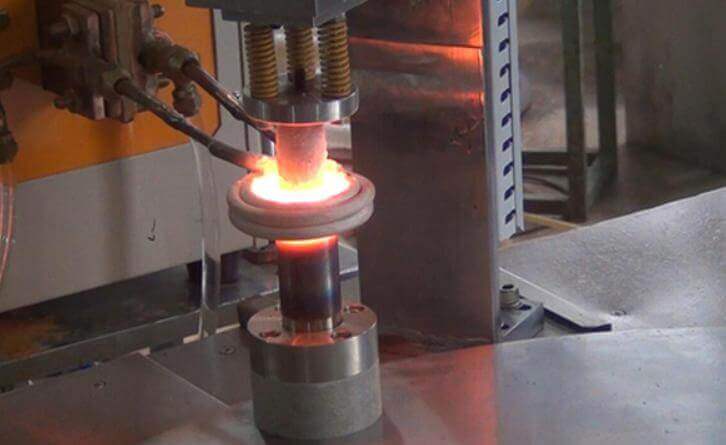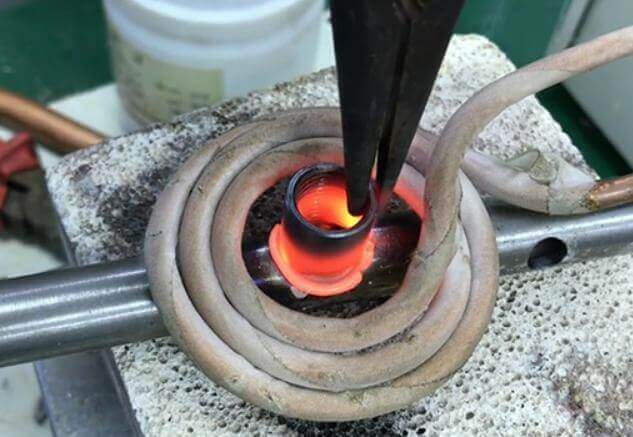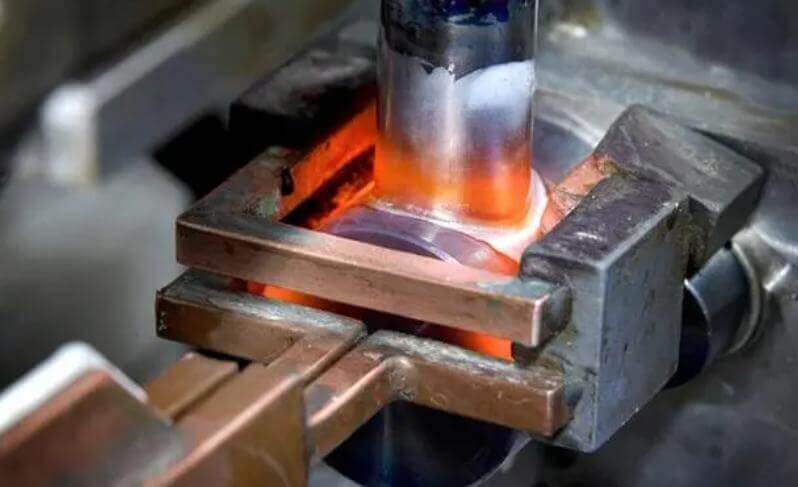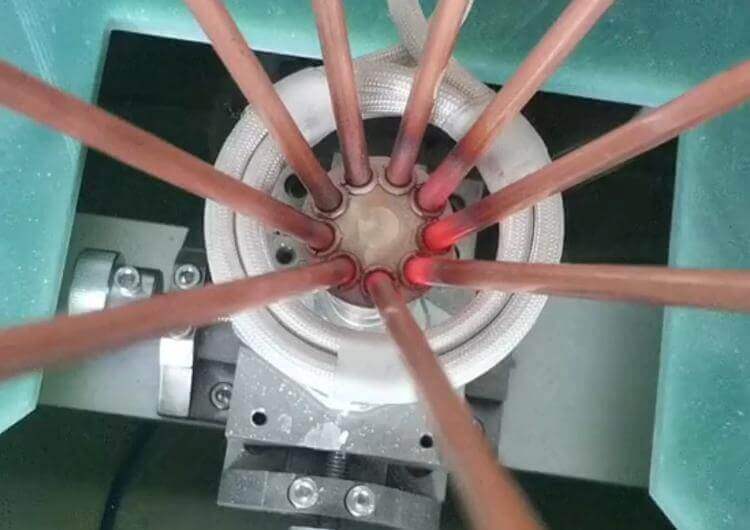How Does Induction Heating Work? A Comprehensive Guide?
Induction heating is a widely used method for heating metal parts for a variety of industrial processes such as forging, brazing and heat treating. It works by electromagnetically generating heat within the material being heated, rather than relying on direct contact with a heat source. Its precise and controllable heating capabilities make it a valuable tool in industries such as automotive, aerospace and electronics.
The technology offers many advantages over traditional heating methods, such as faster heat-up times, better temperature control and greater energy efficiency. In this comprehensive guide, we’ll explore how induction heating works, its applications in different industries, and the benefits it brings.
What is Induction Heating?
Induction heating is a process where an electric current is passed through a coil to create a magnetic field. This magnetic field then induces eddy currents within the conductive material, which generates heat. This method is widely used in various industries, such as induction welding, heat treatment and even cooking.
The advantages of induction heating lie in its efficiency and precision. It allows for localized heating, which reduces energy consumption and minimizes heat loss. In addition, induction heating can quickly reach high temperatures, making it ideal for high-volume production processes. It is also a clean and environmentally friendly heating method as it does not produce any harmful emissions.
Fundamentals of Induction Heating
Induction heating is a highly efficient method of heating conductive materials such as metals. The fundamentals of induction heating are based on understanding the electromagnetic properties of the material and the design of the induction heating system. The key components of an induction heating system include the power supply, coil or inductor, and the workpiece.
Controlling the frequency, power, and time of the induction heating process is critical to achieving the desired heating results. Proper design of the coil and selection of the power supply are also important factors to consider.
Electromagnetic Induction
Electromagnetic induction heating involves a complex combination of electromagnetic energy and heat transfer, through an induction coil, which creates an electromagnetic field within the coil that heats and potentially melts steel, copper, brass, graphite, gold, silver, aluminum, or carbide.
Electromagnetic induction is the process by which a changing magnetic field induces an electric current in a conductor. When an induction heating coil is supplied with current using an alternating current (AC) source, the coil generates an alternating magnetic field. When an object is placed in this field, two heating effects occur: hysteresis losses – these only occur in magnetic materials such as iron, and eddy current losses – which occur in all conductive materials. Eddy currents flow in circles through the material and generate heat through resistive losses.
When a conductor is exposed to a changing magnetic field, the magnetic flux through the conductor changes, which then induces an electromotive force according to Faraday’s law of electromagnetic induction. This electromotive force causes current to flow through the conductor, forming an electric loop.
Induction Heating Process
The induction heating process involves three steps:
Power supply: A power supply generates a high-frequency alternating current that energizes the induction coil. The penetration depth of the electromagnetic field into the heated material is dictated by the frequency of this current.
Induction coil: An induction coil, crafted from copper, generates an electromagnetic field upon the passage of electric current. The design of this coil is meticulously tailored to conform to the specific shape and dimensions of the component being heated.
Workpiece: The component undergoing heating is referred to as the workpiece. When positioned within the coil, an electromagnetic field induces eddy currents in the workpiece, resulting in heat generation. The quantity of heat produced is contingent upon both the material’s resistivity and the frequency of the current employed.
Induction Coil Design
When designing an induction coil, there are several important factors to consider to ensure optimal performance and efficiency. Induction coils have a wide range of uses, from heating and melting metals to powering transformers and motors. The design of the coil plays a vital role in determining how effectively it performs these tasks.
Key considerations in induction coil design include the number of turns, wire gauge, core material, and the shape and size of the coil. The number of turns determines the strength of the magnetic field produced by the coil, while the wire gauge and material affect the coil’s resistance and ability to dissipate heat.
The shape and size of the coil also play a role in how efficiently and effectively it produces the electromagnetic field. The coil must also be designed to provide a uniform electromagnetic field across the workpiece to ensure even heating.
How Does Induction Heating Work?
Induction heating works by using an electric current to create a magnetic field, which then creates heat within a conductive material. The process involves passing an alternating current through a copper coil, which creates a changing magnetic field.
Induction heating is a process where a metal object (magnetic or non-magnetic) is placed in a changing magnetic field, technically called eddy currents. The heat is then transferred throughout the material, rapidly heating it to the desired temperature.
Then, if you interrupt that magnetic field by inserting a piece of metal, the field begins to surround the workpiece at a very high rate. How high the rate depends on the frequency of the applied RF field.
As the magnetic field continues to “spin” around the metal, it begins to create heat within the workpiece. How is the heat created? Because every metal has a certain amount of electrical resistance within it, this resistance effect causes the applied magnetic field to create friction within the metal, which in turn creates heat on the surface of the metal, which is commonly referred to as the skin effect. Depending on how long you are out of the magnetic field, heat will begin to move through the metal by conduction.
Who Uses Induction Heat?
Induction heating is a precise and efficient method of heating a wide range of materials for a variety of industries. Induction heating is commonly used in applications such as brazing, welding, annealing and hardening in industries where precision, consistency and speed are critical. This includes everything from automotive manufacturers to aerospace companies, and from medical device manufacturers to electronics producers.
Advantages and Limitations of Induction Heating
Induction heating is a fast and efficient method of heating metal or other conductive materials. It is also a precise and repeatable non-contact method that allows for targeted heating of applicable items. Materials can be metals such as brass, aluminum, copper or steel, or semiconductors such as silicon carbide, carbon or graphite.
Induction heating is highly efficient compared to other heating methods such as gas or electric heating. It is also very precise, heating only the desired area of the material without affecting surrounding areas. This makes it ideal for applications such as case hardening, melting, brazing and welding, and heating to fit.
Safety
One of the main benefits of induction heating is its safety. Unlike gas heating, there are no open flames or hot coils, which reduces the risk of fire or burns. Additionally, induction heating does not produce any harmful emissions, making it an environmentally friendly choice.
Product Quality
Induction heating can produce high-quality products with consistent and repeatable results. Precise and targeted heating of the material ensures minimal deformation or warping of the material, resulting in a high-quality finished product. This is particularly important in industries such as aerospace and automotive, where precision and quality are critical.
Energy Efficiency
Induction heating is a highly energy-efficient heating method, making it an affordable choice for businesses. It is estimated that induction furnaces use 5% to 10% less energy than traditional electric furnaces and about three times more energy than gas furnaces. This can result in significant cost savings in the long run.
Limitations of Induction Heating
Induction heating is a method of heating conductive materials by creating eddy currents within the material. The process offers a variety of advantages, but it also has limitations.
Cost
Induction heating equipment can be expensive to purchase and maintain, making it less cost-effective for some applications.
Material Limitations
Induction heating is only effective for materials that are conductive or magnetic, limiting its use to non-metallic materials.
Size Limitations
Induction heating is best suited for heating small to medium-sized parts, so it is less suitable for heating larger parts or materials.
Heating Depth
Induction heating can be limited in terms of heating depth, as it may not reach deep into the material, resulting in uneven heating of thicker parts.
Factors Affecting Induction Heating
Induction heating is an intricate process influenced by multiple variables. A thorough comprehension of these factors is essential for enhancing the efficiency and performance of an induction heating system. Below are some principal factors that impact induction heating:
Operating Frequency
The operational frequency of an induction heating system critically influences the penetration depth of the electromagnetic field within the workpiece. A higher frequency yields a more superficial penetration, whereas a lower frequency results in deeper penetration. Additionally, frequency is directly correlated with the efficiency of the heating process; increased frequencies enhance this efficiency.
Power Supply
The power supply for an induction heating system must be capable of delivering sufficient power to the work coil to achieve the required heating rate. Additionally, it must maintain a consistent output regardless of variations in the load on the work coil.
Inductor Design
The inductor plays a pivotal role in generating the electromagnetic field, making its design crucial for the optimal performance of an induction heating system. A well-engineered inductor must deliver the requisite field strength and distribution while ensuring efficiency and reliability.
Work Coil Design
The work coil, as a pivotal component in the induction heating system, is responsible for conducting current and inducing heat within the workpiece. The design of this coil is paramount to optimizing system performance. It must be engineered to achieve the specified heating rate and distribution with utmost efficiency and reliability.
Innovations and Future Development
Despite the maturity of induction heating systems as a technology, contemporary advancements persist in offering opportunities for innovative research trends and industrial applications. The following developments are particularly noteworthy:
Efficiency Improvements– With advancements in semiconductor technology, induction heating systems are expected to become more efficient. Additionally, specialized coil shapes and designs can further enhance their performance.
Induction Heaters with Multiple Coils– Simultaneous operation of multiple coils enhances heat distribution, improves performance, and provides greater flexibility. Additionally, it is important to account for the coupling effect between individual coils.
Advanced Control– Effective control algorithms are essential for ensuring the optimal operation of power converters across various induction heating loads and operational conditions. Additionally, managing multi-coil systems presents a significant challenge that must be addressed.
Special Applications– As technology continues to advance, the scope of induction heating applications is anticipated to broaden significantly. Of particular interest are the heating of low-resistivity materials and the thermal treatment of biological tissues for medical purposes.
Conclusion
Induction heating offers many advantages but isn’t suitable for all materials, especially non-conductive ones like plastics and ceramics. Additionally, the initial equipment costs are higher than those for traditional heating methods.
Induction heating is a highly efficient solution for industrial applications, offering precise and consistent heating with minimal energy waste. As technology advances, its importance in manufacturing processes continues to grow.
KEXIN’s induction melting furnace has higher thermal efficiency and lower energy consumption. They can produce a mild metal bath mixture, mixing a uniform alloy at a constant and uniform temperature. For these reasons, this type of furnace is the first choice for induction melting. Kexin products can flexibly meet all customer requirements.
Can we help you?
 Whatsapp
Whatsapp





